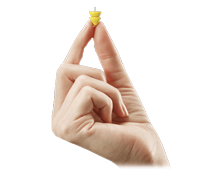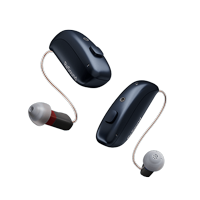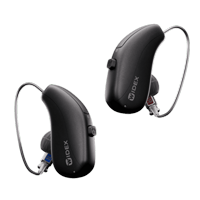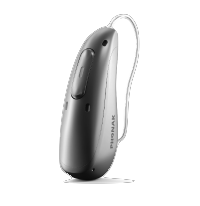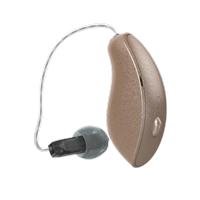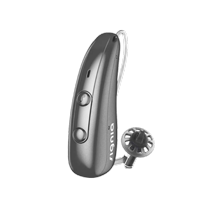
Adjusting to new hearing aids can be a life-changing experience, and residents of Palo Alto have countless success stories to share. Whether you’re considering your first pair of hearing aids or upgrading to newer technology, understanding the adjustment process and learning from others’ experiences can make your journey smoother and more successful.
Many people in Palo Alto initially feel overwhelmed when they first receive their hearing aids, but with proper guidance and patience, the vast majority experience significant improvements in their quality of life. The key is knowing what to expect and having the right support system in place throughout your hearing aid adjustment period.
Understanding the Initial Adjustment Period
When you first start wearing new hearing aids, your brain needs time to readjust to processing sounds it may not have heard clearly for months or even years. This neurological adaptation process is completely normal and varies from person to person.
During the first few weeks, you might experience:
- Sounds seeming unnaturally loud or sharp
- Your own voice sounding different
- Background noise being more noticeable
- Temporary fatigue from increased auditory processing
- Physical adjustment to wearing the devices
Professional hearing aid fitting services can help minimize these initial challenges by ensuring your devices are properly calibrated for your specific hearing loss profile.
Palo Alto Success Story: Margaret’s Journey
Margaret, a 68-year-old retired teacher from Palo Alto, had been struggling with hearing loss for several years before deciding to get hearing aids. “I was missing conversations with my grandchildren and avoiding social situations,” she recalls. “I knew I needed help but was nervous about the adjustment process.”
After receiving comprehensive hearing testing, Margaret was fitted with modern digital hearing aids. Her audiologist provided her with a structured adjustment plan:
- Week 1-2: Wear the hearing aids for 2-4 hours daily in quiet environments
- Week 3-4: Gradually increase wearing time to 6-8 hours, including some social situations
- Week 5-6: Begin wearing them for most waking hours, including challenging environments
- Week 7-8: Full-time wear with regular follow-up appointments for fine-tuning
“By the end of two months, I couldn’t imagine life without my hearing aids,” Margaret shares. “The professional support I received made all the difference in my successful adjustment.”
Tips for Successful Hearing Aid Adjustment
Based on numerous Palo Alto success stories, here are proven strategies for adjusting to new hearing aids:
Start Gradually
Don’t try to wear your new hearing aids for 12 hours on the first day. Begin with short periods in quiet environments and gradually increase both the duration and complexity of listening situations.
Practice Active Listening
Engage in activities that help retrain your brain to process sounds effectively:
- Read aloud to yourself
- Listen to audiobooks or podcasts
- Practice conversations with family members
- Attend small group gatherings before large events
Keep a Hearing Aid Journal
Document your daily experiences, noting what sounds good and what might need adjustment. This information is invaluable during follow-up appointments with your audiologist.
Common Challenges and Solutions
Every person’s hearing aid adjustment journey is unique, but some challenges are more common than others. Here’s how Palo Alto residents have successfully overcome typical obstacles:
Challenge: Everything Sounds Too Loud
Solution: This is normal during the first few weeks. Your brain has adapted to hearing loss, and now it needs to readjust to a fuller range of sounds. Most people find this sensation decreases significantly within 2-3 weeks.
Challenge: Background Noise Interference
Solution: Modern hearing aids have advanced noise reduction features, but learning to focus on desired sounds takes practice. Start in quiet environments and gradually work up to noisier settings.
Challenge: Physical Discomfort
Solution: If your hearing aids cause physical discomfort, contact your audiologist immediately. Proper fit is crucial for both comfort and optimal performance. Professional hearing aid repair and adjustment services can resolve fit issues quickly.
The Role of Professional Support
Professional guidance throughout your hearing aid adjustment period cannot be overstated. Quality audiological care includes not just the initial fitting, but ongoing support throughout the adaptation process.
Comprehensive hearing services should include:
- Detailed hearing evaluations
- Personalized hearing aid recommendations
- Professional fitting and programming
- Follow-up appointments for fine-tuning
- Ongoing maintenance and repair services
- Patient education and support
Success Story: David’s Professional Experience
David, a 55-year-old software engineer from Palo Alto, needed hearing aids that would work effectively in his technology-focused work environment. His biggest concerns were conference calls and open office acoustics.
“The initial consultation was thorough,” David explains. “We discussed not just my hearing loss, but my lifestyle and work requirements. The audiologist recommended hearing aids with advanced directional microphones and Bluetooth connectivity.”
David’s adjustment process included:
- Custom programming for his specific work environment
- Training on using smartphone apps to adjust settings
- Workplace acoustics consultation
- Regular follow-up appointments for optimization
“Within six weeks, I was performing better in meetings than I had in years. The professional approach made all the difference in achieving success with my new hearing aids.”
Additional Support Services
Many people don’t realize that hearing health involves more than just hearing aids. Comprehensive care may also include:
- Tinnitus therapy for those experiencing ringing in the ears
- Hearing protection services to prevent further hearing loss
- Counseling and support groups for adjustment challenges
- Family education to improve communication strategies
Technology Advances Improving Adjustment
Modern hearing aid technology has made the adjustment process easier than ever before. Today’s devices feature:
- Automatic Environment Detection: Hearing aids can automatically adjust settings based on your listening environment
- Smartphone Integration: Apps allow you to make real-time adjustments and track your progress
- Machine Learning: Some hearing aids learn your preferences and automatically adapt
- Rechargeable Batteries: Eliminating the hassle of frequent battery changes
- Invisible Designs: Reducing self-consciousness during the adjustment period
Building Confidence During Adjustment
Confidence plays a crucial role in successful hearing aid adjustment. Palo Alto residents who’ve had the most success share these confidence-building strategies:
Celebrate Small Victories
Notice and celebrate improvements, even small ones. Perhaps you heard a bird singing that you hadn’t noticed in years, or you followed a conversation in a restaurant without straining.
Stay Patient with the Process
Remember that adjustment is a gradual process. Most people need 6-8 weeks to fully adapt to their new hearing aids, and some may need up to three months for complete adjustment.
Communicate Your Needs
Don’t hesitate to communicate with your audiologist about any concerns or challenges. Professional hearing care providers want you to succeed and are there to support you throughout the process.
Cal Hearing Services for Palo Alto Residents
For residents in the Palo Alto area seeking professional hearing care, Cal Hearing provides comprehensive services designed to ensure successful hearing aid adjustment and long-term satisfaction. Our team understands that every person’s hearing journey is unique, and we’re committed to providing personalized care throughout the process.
Our complete range of services includes:
- Comprehensive hearing testing using the latest diagnostic equipment
- Professional hearing aid fitting with personalized programming
- Ongoing support and follow-up care
- Specialized tinnitus therapy for managing ear ringing
- Custom hearing protection solutions
- Professional hearing aid repair services
We serve multiple locations throughout the region, and you can learn more about our coverage at our areas we serve page. Additionally, our resources section and blog provide valuable information to support your hearing health journey.
Long-term Success and Maintenance
Successful hearing aid adjustment is just the beginning of your journey to better hearing. Long-term success requires ongoing care and maintenance:
- Regular cleaning and maintenance of your devices
- Annual hearing evaluations to monitor changes
- Periodic reprogramming as your hearing needs evolve
- Staying current with technology upgrades
- Maintaining good overall hearing health habits
Your Journey to Better Hearing Starts Now
The success stories from Palo Alto residents demonstrate that with the right approach, professional support, and patience, adjusting to new hearing aids can be a positive, life-changing experience. Every person’s journey is unique, but the destination is the same: improved communication, enhanced relationships, and a better quality of life.
Remember that successful hearing aid adjustment is a process, not an event. With proper guidance, realistic expectations, and commitment to the process, you too can join the many Palo Alto residents who have successfully transformed their lives with hearing aids.
If you’re ready to begin your journey to better hearing or need support with your current hearing aids, professional help is available. Don’t let hearing challenges continue to impact your quality of life. Contact our team today to schedule your consultation and take the first step toward your own hearing success story.


